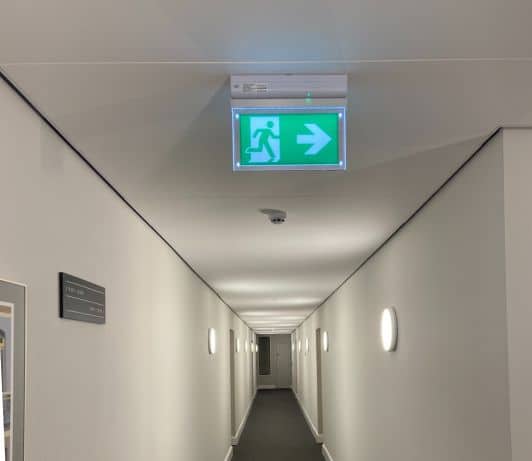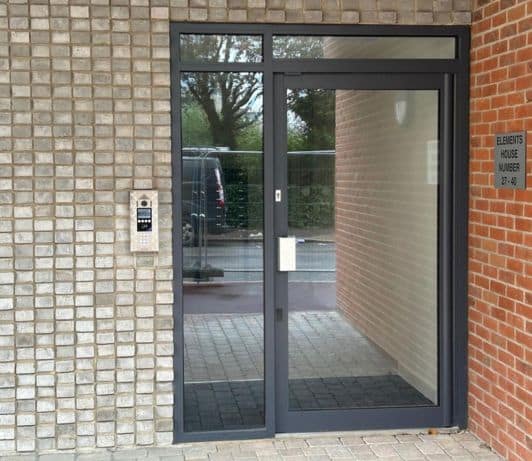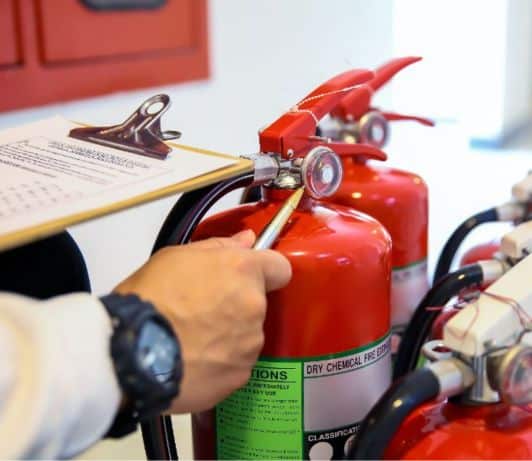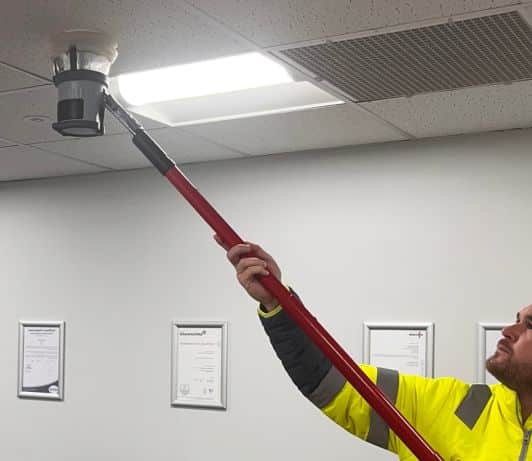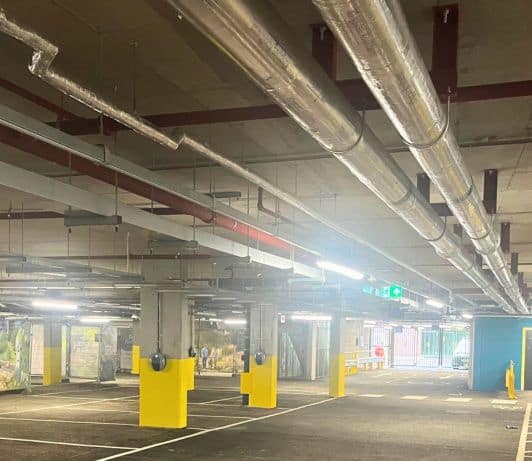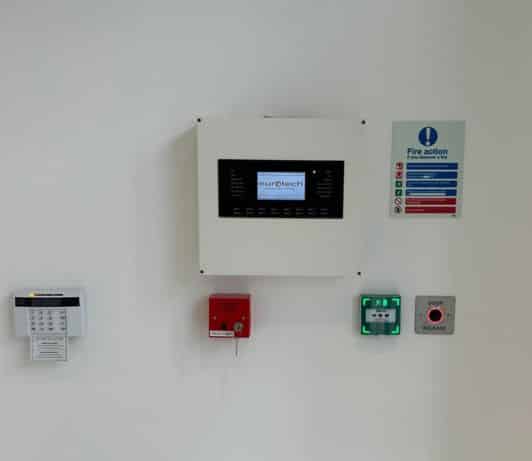Understanding The Building Safety Act 2022
Outlined in response to the Grenfell Tower tragedy, the Building Safety Act 2022 is one of the most comprehensive overhauls of British safety standards in recent history. This act aims to strengthen fire safety, create safer environments for residents to live in, as well as improve accountability throughout the lifecycle of a building, including during the development and future maintenance stages.
To create safer living environments, fire safety regulations need to be met and maintained. As a leading fire safety provider, Nomico Fire & Security are outlining everything you need to know about the Building Safety Act 2022 and how this impacts fire safety regulations across your premises.
With this information, you can ensure you remain compliant and legally sound, while also delivering higher standards of fire safety for occupants, tenants and residents.
What Is The Building Safety Act 2022?
The Building Safety Act 2022 was created in response to the Grenfell Tower tragedy, outlining higher standards of fire safety and building regulations.
The Act defines a new framework for building safety across England, with a particular focus on high-rise residential buildings, either 18 metres or more in height or spanning at least 7 storeys.
The key objectives of the Building Safety Act 2022 include:
- Improve safety and overall standards for building environments
- Defines clear roles and responsibilities for dutyholders in the design, construction and management of high-risk buildings (such as principal contractors, building safety managers or other accountable persons)
- Establish a Building Safety Regulator, who will monitor the design, construction and/or management of property to ensure ongoing compliance
- Create and support systems for residents to raise concerns and receive safety information
How Does The Building Safety Act 2022 Impact Fire Safety Standards?
There are various ways this Act impacts current fire safety standards and the ongoing regulations across residential premises. This act outlines key areas required to ensure compliance and safety, such as:
The Role of The Building Safety Regulator
The Building Safety Regulator (BSR) essentially acts as the watchdog for the premises, ensuring fire safety standards are being met throughout the design, construction and management of residential high-rise premises. This role is hosted by the Health and Safety Executive and oversees tasks such as:
- Ensuring the building meets fire and structural regulations
- Ensures dutyholders are held accountable
- Oversees inspections, assessments, approvals and enforcements that are completed for enhanced fire safety and compliance
Accountable Persons & Building Safety Managers
Under the Building Safety Act 2022, all buildings must have an Accountable Person (AP) who is legally responsible for managing safety risks. In many cases, the AP will be a freeholder or a management company that oversees the operations of the premises, and these are responsible for:
- Performing regular fire risk assessments
- Preparing and maintaining the Building Safety Case Report, which outlines fire safety mitigation and methods
- Appointing a Building Safety Manager (BSM) who oversees the day-to-day safety operations, which is required in high-risk buildings
The Golden Thread of Information
The information about a building is often referred to as the Golden Thread and this plays a vital role in the Building Safety Act 2022.
Under this act, the Golden Thread is the digital record of key building data, such as that referring to fire and structural safety. This information needs to be maintained and updated throughout the lifecycle of the building. With accurate records, you can ensure:
- Designers, builders, and managers have access to critical safety information regarding the premises
- Transparency is guaranteed, which is vital at all times but especially during emergencies, where this information will be revised and used as evidence
- Access to information at all three gateway points during the building’s development to keep everyone on track
The New Gateway System
The Building Safety Act 2022 also outlines the three checkpoints which are required during the building’s development to assess safety standards and ensure compliance. These gateways aim to prevent unsafe buildings from being occupied, while also strengthening regulatory scrutiny to prevent things from falling through the cracks.
- Gateway One: This is the planning phase of the property development, and outlines that fire safety must be considered early.
- Gateway Two: This is the pre-construction phase, and BSR (Building Safety Regulator) approval is required before the process can move forward.
- Gateway Three: The completion of the property, where the BSR assesses fire safety to ensure compliance before residents begin to occupy the building.
Who Is Affected By The Building Act 2022?
Remaining compliant with this act means understanding your role and how this may be affected by the updates. Under these regulations, various people involved in the development and management of residential high-rise buildings are held responsible for safety in some manner, including:
- Developers & Designers: Fire safety needs to be embedded in the building from the initial stages of development and remain present during the planning stages. The developers and designers must also provide documentation for regulatory approval and be able to demonstrate compliance throughout this stage.
- Building Owners & Landlords: Under this Act, owners and landlords are responsible for the safety of their residents. This means they have legal duties to manage ongoing risks, maintain any safety concerns, as well as communicate with residents regarding their safety, concerns or requirements.
- Contractors: Fire safety needs to be upheld during the building and development of the property, with records to prove all necessary steps and overall compliance.
- Residents: Residents have rights regarding fire safety information and should be able to access this on demand. They can also raise concerns and take complaints to the BSR if ignored.
Penalties For Non-Compliance: Why The Building Safety Act 2022 Matters
Failure to comply with the Building Safety Act 2022 can lead to serious consequences. The Act outlines tough enforcement measures to prevent tragedies like Grenfell Tower from occurring again, and those deemed not to comply will face:
- Stop notices for unsafe work, preventing the continuation of the building development or construction
- Enforcement notices for failure to comply, which are formal legal warnings issued by the regulatory body (such as the Building Regulations) that outline what needs to be fixed and a timeline for this
- Criminal charges and fines for serious breaches or failure to comply after warnings
In some cases, dutyholders who fail to maintain their responsibility regarding fire safety can face prosecution. Penalties are given to individuals involved in this, not just organisations, outlining the importance of compliance and fire safety as a whole.
What Does The Act Mean For Fire Safety?
The Building Safety Act 2022 is designed to promote a culture shift regarding building regulations and fire safety. Following the Grenfell Tower tragedy, there was a national call for better standards to prevent this from happening again, and this Act is designed to meet these needs.
By providing better building standards and stricter enforcement regarding fire safety, the Building Safety Act 2022 ensures better protections are in place for residents. Buildings are designed, developed and maintained to a higher standard than before, and residents’ concerns are taken seriously to prevent fatalities again.
With digitally maintained records, greater transparency is offered to all involved in the building development and management, including the residents. This empowers residents and provides peace of mind that their homes are safe.
Under this act, everyone from building designers to managers and landlords, as well as the residents occupying the homes, has a new role to play in maintaining fire safety. This is a continuous responsibility for everyone involved and encourages collaboration to prevent tragedies on the scale of Grenfell Tower from occurring again.
Conclusion
The Building Safety Act 2022 is a direct response to the mishandling of Grenfell Tower and a way to prevent similar tragedies from occurring again. These new regulations outline stricter enforcement, clear communication, and better standards regarding the fire safety of high-rise residential premises.
Under this act, many people are responsible for ensuring and maintaining the compliance of buildings, including the developers, designers, and residents themselves.
If you are considered an accountable person under this act, consider working with Nomico Fire & Security to ensure compliance. We offer a range of fire safety services, including fire risk assessments, fire alarm installation, and service and maintenance of systems to ensure compliance and safety for all involved.
Contact Us Today
Ensure you are compliant and your building is safe by working with our engineers. Contact us today to learn more about our services or request a consultation.
FAQs
What is the Building Safety Act 2022?
The Building Safety Act 2022 is a UK law to improve the safety of buildings, with a particular focus on high-rise residential properties across the country. This Act sets out regulations for building design, construction and ongoing management to reduce risks in fire and structural safety.
What types of buildings does the Act refer to?
Some provisions under the Building Safety Act 2022 apply to all properties across the country, the Act focuses on ‘higher-risk buildings’ such as residential properties over 18 metres or 7 storeys high.
Who does the Act apply to?
The Act applies to building owners, developers, contractors, and managing agents, including landlords. It is particularly relevant to those operating in and around high-rise residential buildings and outlines the dutyholder’s responsibilities, which are required by law.

